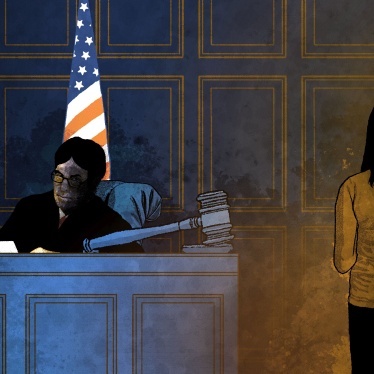Clarence Hill is scheduled to be executed by lethal injection on Wednesday. Mr. Hill has repeatedly filed requests seeking details on the chemicals and procedures that will be used to kill him yet the state has refused to provide Mr. Hill—or the public—with the information he has requested. The information is important because it could indicate whether Mr. Hill will be executed by means that could inflict intense and extended pain during execution. We urge Governor Bush and the State of Florida to postpone Mr. Hill’s execution so that legitimate and well-founded concerns that Florida’s lethal injection protocol may result in cruel punishment can be examined. We also call on Governor Bush to order public hearings to review Florida’s lethal injection protocol.
Other states have already taken such measures. Recently, South Dakota Governor Mike Rounds postponed the lethal injection of convicted murderer Elijah Page just days before his scheduled execution, citing concern about the state’s protocols. In California, a judge recently ordered hearings on California’s lethal injection protocol after logs from six recent executions revealed that prisoners’ chests were still moving regularly up and down long after the anesthetic component of the lethal injection should have stopped their breathing. These chest movements suggest the prisoners may have been awake and suffering.
Human Rights Watch has
recently researched and documented why lethal injection protocols are increasingly viewed as causing unnecessary pain and suffering. Most people believe lethal injections to be painless. Yet mounting evidence from states across the country—and from Florida execution records—suggests that the current method of lethal injection may in fact be a very painful way to die.
Florida adopted lethal injection executions in 2000—in part because of pressure to do away with the electric chair after a prisoner’s head erupted in flames during a botched electrocution. Since then, Florida has executed sixteen prisoners by lethal injection. Most people believe lethal injections to be painless.
The three-drug lethal injection protocol used in Florida and every other lethal injection state works like this: the condemned prisoner is strapped to a gurney and injected with a massive dose of the anesthetic sodium pentothal, which should render him unconscious. Next he is injected with pancuronium bromide, a drug that paralyzes voluntary muscles, including the lungs and diaphragm. Finally, he is injected with potassium chloride, which should bring swift cardiac arrest.
The problem, however, is that if the anesthetic does not render the prisoner unconscious, he will experience tremendous pain—he will feel himself suffocating from the pancuronium bromide and will feel his veins burning up as the potassium chloride courses to his heart. Potassium Chloride is so painful that U.S. veterinarian guidelines prohibit its use on domestic animals unless a veterinarian first ensures they are deeply unconscious. No such safeguards are observed for human executions. Indeed to our knowledge, neither Florida – nor any of the other lethal injection states – has ever subjected its lethal injection protocol to scrutiny by independent pharmacologists or the public.
Some information on Florida lethal injections is public, despite the efforts of the Florida Department of Corrections. During the June 8, 2000 execution of Bennie Demps it took execution technicians thirty-three minutes to find suitable veins for the execution. In his final statement, Demps said: "They butchered me back there, I was in a lot of pain. They cut me in the groin; they cut me in the leg. I was bleeding profusely. This is a low-tech lynching by poison."
Autopsy reports from the lethal injections of Thomas Provenzano on June 21, 2000 and Robert Glock on January 11, 2001 indicate that executioners had a hard time finding and maintaining intravenous access to their veins—raising doubts about whether the condemned inmates received the lethal injection chemicals in the order and amount necessary to prevent intense suffering before death. Toxicology reports in Missouri and North Carolina also suggest some prisoners may have been inadequately anesthetized before they were killed.
As governor of Florida, you have the responsibility and authority to ensure that the method of execution used does not subject the condemned prisoner to cruel punishment, such as through infliction of unnecessary and avoidable pain. Available evidence suggests Florida’s three drug protocol fails that test. In resisting court challenges, public information requests, and local and national media attention, Florida has gone to great lengths to keep its residents from knowing how it conducts lethal injections and what has actually happened during recent executions. If Florida believes that its protocols can withstand scrutiny, why the secrecy?
Human Rights Watch believes that all executions are inherently cruel. But if a state is going to have the death penalty, it cannot simply adopt an execution procedure because it looks good. By refusing thus far to subject their protocols to public scrutiny, Florida has failed its residents who entrust them with the awesome responsibility of executing prisoners.
We urge you to postpone Clarence Hill’s execution, and order public hearings into Florida’s lethal injection protocols and procedures.
Sincerely,
Jamie Fellner
Director, U.S. Program





